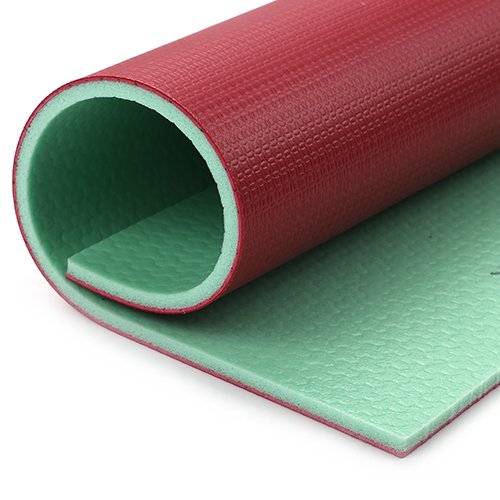दिसम्बर . 04, 2024 13:10 Back to list
Choosing the Right Flooring for Your Basketball Court Installation
The Impact of Flooring on Basketball Courts An In-Depth Exploration
The dynamics of basketball are not only influenced by the players and the rules of the game but also by the very surface on which the game is played. The flooring of a basketball court is a crucial element that can affect performance, safety, and the overall playing experience. This article delves into various aspects of basketball court flooring, exploring materials, maintenance, safety concerns, and innovations in flooring technology.
The Importance of Flooring Material
Basketball courts are typically made from a variety of materials, each offering distinct advantages and drawbacks. The most common flooring options include hardwood, synthetic, and modular surfaces
1. Hardwood This traditional material is revered for its aesthetics and superior playability. Hardwood courts, usually made from maple, provide an excellent grip and responsiveness, allowing players to make quick cuts and jumps. The natural elasticity of wood absorbs shock, reducing the risk of injuries. However, hardwood is susceptible to moisture and requires regular maintenance, including refinishing and sealing to protect its integrity.
2. Synthetic Surfaces Materials like vinyl and rubber have gained popularity as alternatives to hardwood. Synthetic flooring is more durable and resistant to moisture, making it suitable for both indoor and outdoor courts. These surfaces are often designed to provide cushioning and traction, enhancing player performance. However, some players argue that synthetic surfaces can lack the “feel” of hardwood, impacting the overall game experience.
3. Modular Flooring Interlocking tiles made from high-density polyethylene (HDPE) offer a portable and versatile option for both indoor and outdoor settings. This type of flooring is easy to install and remove, making it ideal for temporary courts or events. While modular flooring provides good traction and comfort, it may not always match the performance of traditional hardwood in professional settings.
Safety Considerations
Safety is paramount in any sport, and the flooring of a basketball court plays an essential role in minimizing injuries. The choice of flooring can affect factors such as surface hardness, traction, and shock absorption. Courts that are too hard may increase the risk of joint injuries, while those that are overly slippery can lead to falls and other accidents.
flooring basketball court

To ensure player safety, flooring should adhere to specific guidelines. For instance, the American Sports Builders Association (ASBA) provides standards for court surfaces, specifying ideal shock absorption ratings and other performance metrics. Regular maintenance, including cleaning and inspection, is vital to prevent hazards such as loose tiles or worn-out surfaces.
Maintenance and Longevity
The longevity of basketball court flooring is influenced by the type of material used and the level of maintenance it receives. Hardwood courts require regular upkeep, including cleaning, polishing, and occasional refinishing to maintain their surface integrity and appearance. In contrast, synthetic and modular floors often require less maintenance, though routine inspections are necessary to ensure safety.
Proper maintenance not only extends the life of the flooring but also ensures optimal playing conditions. This includes regular cleaning to prevent dirt and debris from accumulating, which can affect traction. Additionally, courts that are exposed to moisture need adequate ventilation and dehumidification to prevent warping and mold growth, particularly in wooden surfaces.
Innovations in Flooring Technology
With technological advancements, the future of basketball court flooring is evolving. Innovative designs are focusing on enhancing player performance while prioritizing safety. For instance, some manufacturers are developing hybrid systems that combine different materials to optimize shock absorption and provide a more consistent playing surface.
Smart technologies are also making their way into basketball courts. Some surfaces come embedded with sensors that can track player movements, providing valuable data for training and performance analysis. This integration of technology not only enhances the gameplay experience but also opens new avenues for coaching and athlete development.
Conclusion
The flooring of a basketball court is a fundamental aspect that significantly influences the game. Whether it’s the elegance of a hardwood court, the practicality of synthetic surfaces, or the versatility of modular tiles, each choice carries its implications for performance and safety. As technology continues to advance, the future of basketball court flooring promises to deliver improved materials and features that prioritize the athletes’ well-being while enhancing the game’s excitement. Understanding these elements is crucial for facility managers, players, and coaches alike, ensuring that the game of basketball can be enjoyed safely and effectively for generations to come.
-
Professional Tennis Court Lining Services Pickleball Court Marking Experts
NewsJun.24,2025
-
Pickleball Court for Sale - Premium Flooring Solutions for Sports Venues
NewsJun.10,2025
-
Maple Grove Outdoor Pickleball Courts - Premium Conversion & Durable Materials
NewsJun.10,2025
-
Best Pickleball Outdoor Courts Solutions Convert Tennis Courts, Outdoor Covered Courts, Maple Grove Options
NewsJun.10,2025
-
Convert Tennis Court to Pickleball Fast & Affordable
NewsJun.09,2025
-
Indoor Outdoor Pickleballs Durable & All-Weather for Any Court Play
NewsJun.09,2025

